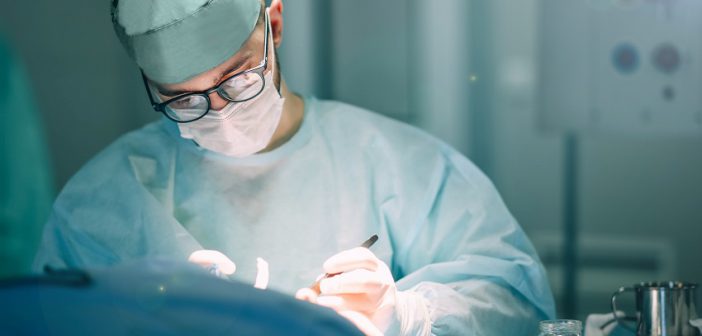Breast augmentation surgery is a multifaceted procedure that delivers natural-looking enhancements to the size, shape, and projection of the breast. While 90% of patients are satisfied with their results and do not experience complications, 10% of patients end up needing a breast implant revision at some point.
When breast augmentation surgery fails to deliver desired results, or when implant patients experience complications, revisionary surgery may be necessary.
What is a breast implant revision?
Breast implant revision is an operation that resolves problems with the size, shape, feel, or placement of breast implants after augmentation surgery.
Common causes of revisionary surgery include:
- Implant failure (rupture or puncture in saline or silicone implants; resorption of fat by the body in the case of a fat transfer)
- Capsular contracture (formation of excess scar tissue around the implant that results in discomfort and implant displacement)
- Implant malposition (a shifting of the implant to an aesthetically displeasing position on the chest wall)
Not all breast implant revisions are the result of complications. Many patients have revisionary surgery 10–15 years after their first augmentation to replace aging implants or to reduce drooping of breast tissue caused by age or breastfeeding.
Patients may choose to undergo a breast implant revision so they can use a different type, shape, or size of implant. Additionally, implants do not have to be replaced in a revision procedure. Some patients may choose to remove the implants completely.
How much does a breast implant revision cost?
A breast implant revision is more complicated than a breast augmentation because the surgeon has to work around scar tissue from the original surgery, address complications, safely remove the old implants, and manage changes in the patient’s medical history.
Because this surgery should be individualized to each patient’s situation, it is normal for surgeons to not offer a set price for breast implant revisions. The total cost will depend on the amount of time the patient needs in the operating room, whether the implants are being replaced, which type of replacement material is being used, and whether or not additional procedures are being performed.
To ensure you are receiving the best value, it is important to choose a surgeon who is certified by the American Board of Plastic Surgery and who has a reputation for skill in reconstructive breast surgeries.
What are the signs I need a breast implant revision?
The following physical symptoms indicate a revisionary surgery may be necessary:
- Increased breast sensitivity to touch, or conversely, long-lasting loss of sensation
- Discomfort or pain when chest muscles are engaged
- Noticeable changes to the appearance of the breast
- Obvious deflation of one or both implants
Changes in sensation
Both increased sensitivity and loss of sensation can be evidence of capsular contracture. If left untreated, breast tissue can harden into a tight, misshapen ball and be damaged.
Discomfort in pectoral muscles
Pain in the muscles of the chest may be an overuse injury from excessive exercise. But it could also be an indication of several complications including capsular contracture, poor implant placement, or infection from a ruptured implant. Meeting with a physician is the best way to determine the cause.
Noticeable changes in breast appearance
Patients who notice rippling of breast tissue, significant asymmetry between the breasts, or a change in the position of the nipple-areolar complex should request a consultation with their surgeon.
A change in implant position in one or both breasts can occur in one of three ways:
- Upward (when a “high-riding” implant moves up the chest wall and causes the nipples to point downward)
- Downward (when an implant “bottoms out” and falls below the natural breast crease, causing the nipples to look like they are too high on the breast)
- Laterally (when an implant shifts either externally or internally on the chest wall, creating breasts that are too far apart or too close together)
Any of these changes should be checked by a doctor.
Implant failure
Damage to a saline implant results in a flat, deflated appearance that is almost immediately obvious. The solution inside a saline implant is the same as IV solution and is not dangerous, but the damaged shell must be removed.
Because the gel inside a silicone implant is quite viscous, failure of these types of implants usually cannot be diagnosed without an MRI or ultrasound. Symptoms of a silicone implant failure are similar to those caused by capsular contracture (increased pain in or hardening of breast tissue, change in shape, etc.).
What is the recovery time for a breast implant revision surgery?
Recovery from breast implant revision is similar to that of breast augmentation surgery. Patients can expect to return to work sometime in the first two postoperative weeks and can return to light exercise such as walking after three weeks.
Strenuous exercise that requires significant upper body involvement, including lifting anything over ten pounds, should be avoided for approximately six weeks.
While some patients feel better before a full six weeks has passed, it’s important to remember that a breast implant revision involves tissues that have previously been operated on. Carefully following all physician recommendations is key to proper healing and optimal results.
How long will a breast implant revision last?
Barring any complications, a breast implant revision should last a minimum of 10 years but can last north of 20. Provided that the implant remains stable and intact, patients can expect long-lasting results.
Patients can help extend the life of their revisionary surgery by wearing proper-fitting bras (especially during strenuous activity), maintaining a stable weight through a healthy diet and regular exercise, and consistent medical care.





Thank you for sharing such an informative article!